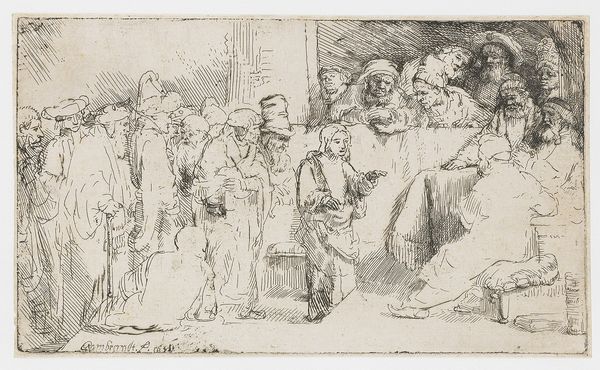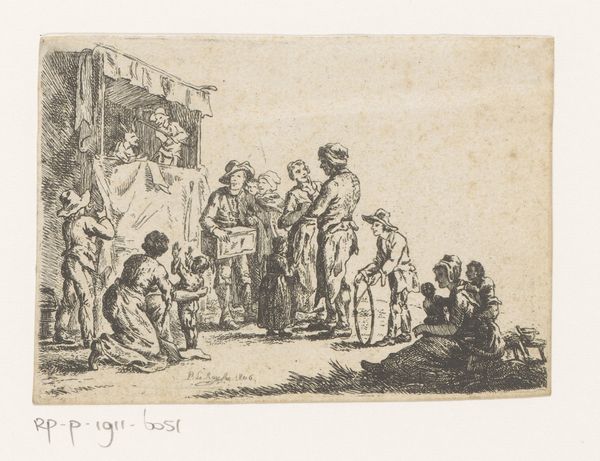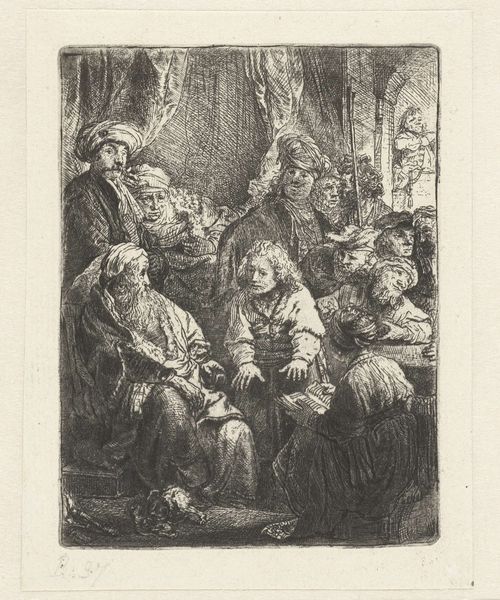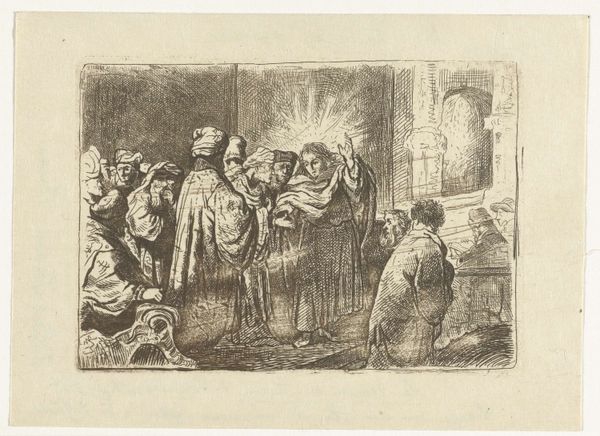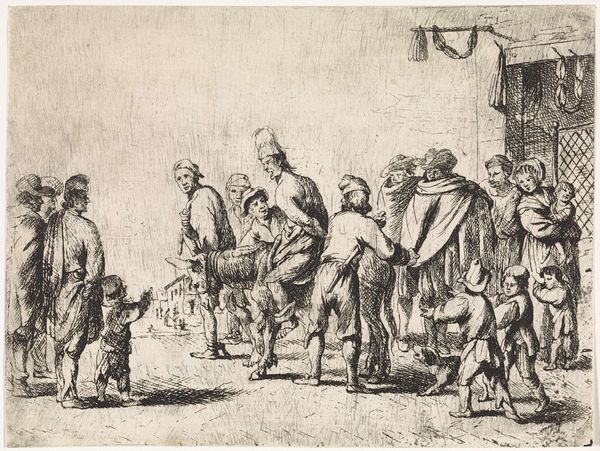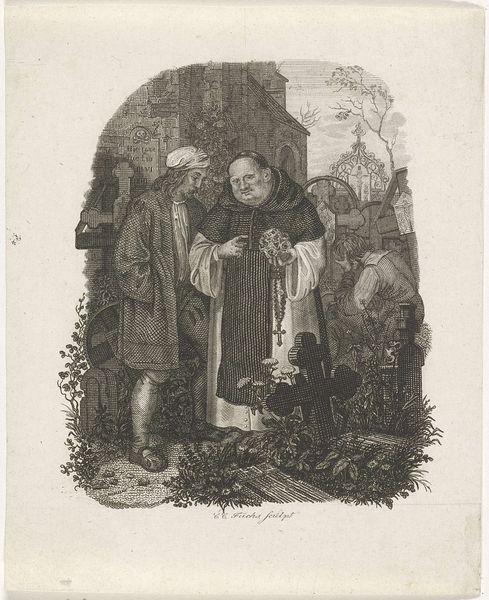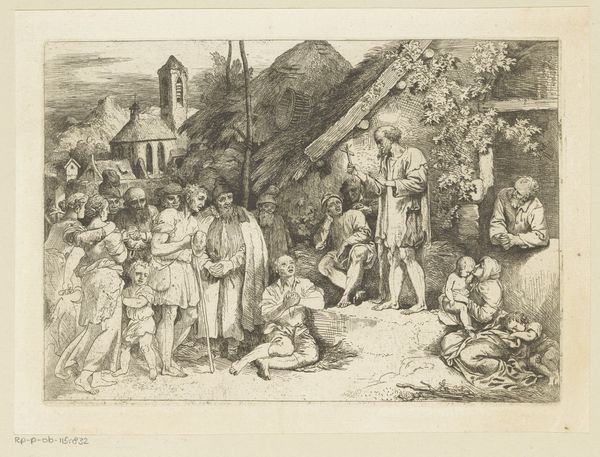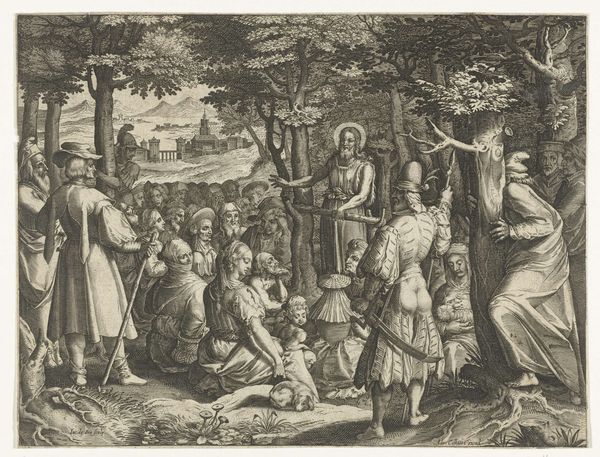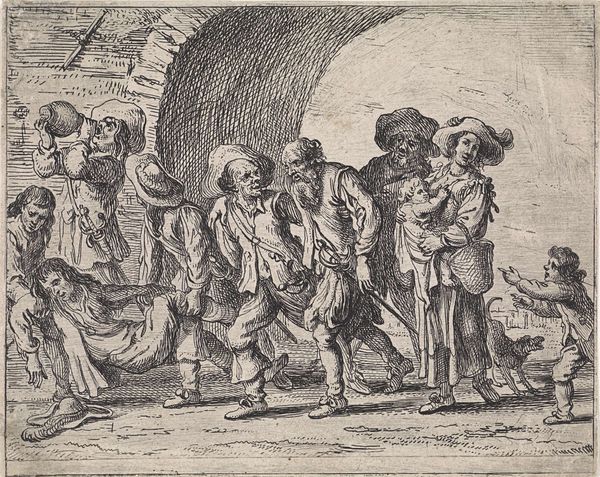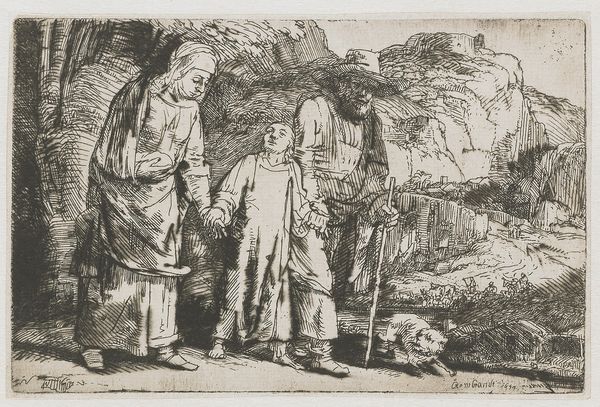
drawing, ink
#
drawing
#
narrative-art
#
baroque
#
figuration
#
ink
#
genre-painting
Dimensions: height 98 mm, width 135 mm
Copyright: Rijks Museum: Open Domain
Editor: This ink drawing, "Christus en de overspelige vrouw," made by Esaias Boursse around 1645-1655, is a depiction of a well-known biblical story. I am immediately drawn to the expressions in this complex composition. What do you see in the visual symbolism here? Curator: The composition itself speaks volumes, doesn't it? Boursse chose to use very tight line work and minimal negative space to evoke a scene teeming with social and emotional intensity. The crowding is deliberate, heightening the drama. Consider how the pointing fingers of the men carry aggressive symbolic power. Where do they originate in earlier religious works? What does the gesture mean? Editor: The pointing fingers are compelling, even accusatory. I feel as though my eye is also pulled to the figure of Christ, but in a quieter way. The symbol seems more human and less vengeful than what I was expecting based on earlier works. Curator: Yes, observe how Boursse presents Christ, not as a figure of immediate divine retribution, but of contemplative humanity, contrasting with the overtly judgmental accusers. Doesn’t the composition place an onus on understanding not just the narrative event, but the psychological landscape it depicts, too? Editor: I'm beginning to notice a dialogue between accusation and introspection, made vivid through a sophisticated artistic technique, creating multiple avenues to experience and think about this drawing. Curator: Exactly, and that's the timelessness of powerful symbolic language in art. Each line carries cultural weight. And like all successful imagery, its emotional value endures even now. What do we learn today, when this drawing invites critical thought about social structures and the place of judgment within them?
Comments
No comments
Be the first to comment and join the conversation on the ultimate creative platform.
